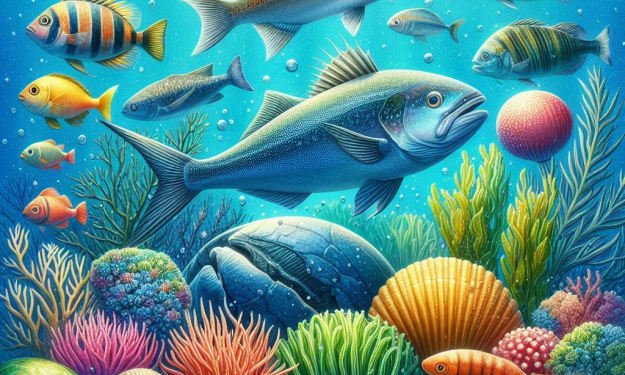Unraveling the Mysteries of Whale Communication
Unraveling Whale Communication with AI

In the vast expanse of the ocean, where sunlight struggles to penetrate the depths, lies a realm where sound reigns supreme. Few humans have ventured into this world, but thanks to cutting-edge technology, we are beginning to glimpse the intricate tapestry of life beneath the waves from a whale's perspective.
Whales, the majestic giants of the sea, navigate this sonic landscape with finesse, communicating through a symphony of clicks, whistles, and haunting melodies. For decades, scientists have pondered the significance of these vocalizations, speculating if they might constitute a form of language.
One pivotal moment in the study of whale communication came in the 1950s when Navy engineer Frank Watlington found himself in the midst of a top-secret project to track submarines. Utilizing hydrophones, Watlington was tasked with detecting the low-frequency sounds emitted by submarines, a critical aspect of naval warfare during the Cold War era. However, amidst the routine task of monitoring underwater sounds for signs of enemy submarines, Watlington stumbled upon something unexpected and extraordinary. In addition to the mechanical sounds of submarines, his hydrophones picked up a series of eerie and otherworldly sounds emanating from the depths of the ocean.
Initially dismissed as interference or equipment malfunction, Watlington's recordings piqued the curiosity of a few researchers, including biologist Roger Payne. Payne and his wife Katy analyzed the recordings and what they discovered was nothing short of astonishing. Contrary to the prevailing belief that whale vocalizations were primitive and rudimentary, the recordings revealed a sophisticated and intricate form of communication. Instead of random noise, they discerned patterns, rhythms, and melodies in the whale songs, suggesting a level of complexity previously unrecognized by science.
Recent advancements in technology, particularly artificial intelligence (AI), have opened new avenues for unraveling the mysteries of whale communication. By harnessing the power of AI language models like ChatGPT, scientists are delving into the intricate world of whale songs, hoping to decode their meaning and gain insight into the lives of these enigmatic creatures.
Currently, AI can help describe different types of whale vocalizations, such as songs, clicks, and calls, and explain their purposes and significance in whale communication. AI can also provide insights into whale behavior and the environmental factors that influence their communication patterns. More importantly, it can also help interpret spectrograms, exploring the frequency, amplitude, and duration of different vocalizations.
Researchers like marine acoustic ecologist Michelle Fournet emphasize the importance of collecting extensive data sets to train AI models effectively. Only by understanding the context of whale vocalizations—what they are doing, who they are with, and how they respond—can we begin to unravel the true meaning behind their songs.
However, the road to understanding whale communication is fraught with challenges. Throughout the 20th century, whales faced widespread slaughter, pushing many species to the brink of extinction. It was Roger Payne's groundbreaking album, "Songs of the Humpback Whale," that catalyzed the Save the Whales movement, leading to the eventual ban on commercial whaling worldwide.
Ultimately, despite decades of research, deciphering whale communication remains a daunting task. Unlike human language, whale songs lack explicit words and grammar, making their interpretation a complex endeavor. AI offers a glimmer of hope in this endeavor, with its ability to analyze vast volumes of data and identify patterns in whale vocalizations.
Perhaps the greatest lesson we can learn from whales is the art of listening. In a world dominated by human noise, we must strive to become better listeners, whether with our ears or through the lens of AI. By embracing curiosity and humility, we can embark on a journey of discovery that transcends language barriers and fosters a deeper connection with the natural world.
As we gaze into the depths of the ocean, let us remember that our quest to understand whales is not merely a scientific endeavor but a profound expression of our shared existence on this planet. So, the next time you find yourself pondering what you would say to a whale, remember the simple yet powerful message: "Stay Curious."
About the Creator
Enjoyed the story? Support the Creator.
Subscribe for free to receive all their stories in your feed. You could also pledge your support or give them a one-off tip, letting them know you appreciate their work.





Comments
Test is not accepting comments at the moment
Want to show your support? Send them a one-off tip.